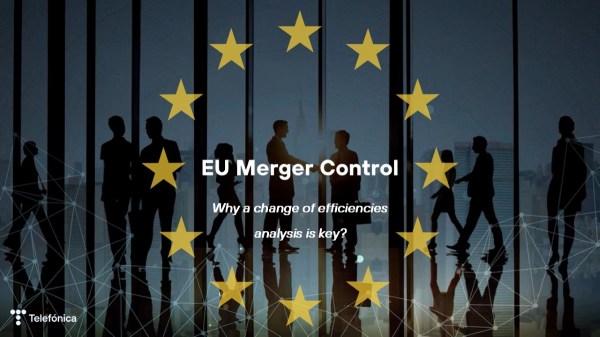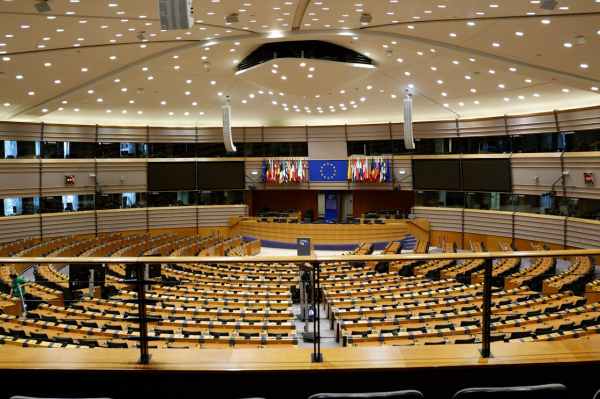Telefónica and other European operators shared their views on competition, competitiveness, and regulatory approach at the MWC24 Barcelona, based on their experience in the region. European operators offer much more than basic connectivity: high-capacity networks, 5G-enabled applications, technical expertise, innovative digital solutions and broad reach and partnerships that contribute to the digital and green transformation of society.
Operators thus provide connectivity and digital services that benefit all sectors, boosting industrial efficiency, innovation, economic growth, competitiveness and ultimately the well-being of citizens. But the sector needs to be sustainable in order to continue to meet these goals.
The state of digital communications and European industry and the need to rebuild the business case for investment and innovation in Europe
And yet the transatlantic technology gap is undeniable and the state of digital communications in Europe is dire, as the figures in the ETNO report show. In our following post we will include some figures in the form of Q&A on the connectivity gap between the US and Europe, which respond to certain inaccurate claims made on this topic.
Even the recent White Paper by the European Commission DG CONNECT on “How to master Europe´s digital infrastructure needs?” recognises Europe’s connectivity infrastructure challenges, the investment needs and the critical financial situation of the EU electronic communications sector.
European industry is facing a challenge, not just in the telecoms sector, but as a whole, as shown in the ERT Competitiveness and Industry Benchmarking Report 2024 “Rebuilding Europe’s business case, working against the clock“, launched on 18 March.
Europe had a working business case. With broadening global competition and the twin transition at a critical stage that business case has started to crumble. And now it needs to be rebuilt. Because otherwise, we will be ‘out of business’ ….
As the report recommends, Europe needs to tackle the barriers that are holding it back, among others the regulatory framework and the approach to competition policy, and rebuild the business case for investment and innovation.
Innovation made in Europe
Innovation is central to economic growth, and no policymaker can afford to ignore the impact of its regulatory or competition policies. The challenge in Europe goes beyond digital rights rules that set guardrails for European or foreign innovation, or deepening the European Capital Markets Union, or adapting punitive bankruptcy laws, or even the availability of talent.
Regulation and competition policy can increase compliance costs and, more importantly, if they are disproportionate, they can also inhibit the development of innovative proposals or their introduction to the market and development at scale. They can also discourage the culture of innovation in contrast to countries with a “market-driven” regulatory model such as the US (as opposed to a compliance-driven culture in a prescriptive and detailed regulatory environment).
A new deal to better serve people, business and the economy as a whole
The interplay between competition policy, regulatory approach, competitiveness, innovation, and the pursuit of consumer welfare is the subject of debate.
Industrial, regulatory and competition policy and practice cannot be considered in a vacuum or in isolation. Policymakers have a crucial role to play in supporting the wider economy: enabling competitive markets where competition can thrive, but also supporting growth, innovation, and investment. Seeking growth not just as a by-product is important. And developing inter-institutional interplay between different regulators and policymakers and aligning proposals and governance, with a better collaboration, will support long-term competitiveness.
Europe needs a “new deal” to put the welfare of people, businesses and the economy as a whole, including consumers, first. In this respect, the approach to regulation and competition must go beyond the mere protection of the competitive process and the search for theoretical efficiencies. A framework for competition analysis is needed that accurately reflects the reality of markets and is adaptable and agile to deal with rapid and significant changes. It is essential to give greater weight to non-price effects such as rapid roll-out in sectors such as telecommunications, improved quality of service, provision of value-added services, promotion of innovation, resilience, environmental sustainability, energy efficiency and the economic sustainability of this vital industry.
And the market itself (“the invisible hand”) has a key role to play in allocating resources efficiently in this complex environment (if it is allowed to do so). Particular attention should be paid to regulation or competition policy aimed at influencing market structures, as it could hinder this search for efficiency in increasingly mature markets. Competition policy practice must evolve as markets evolve, as it is a crucial pillar to ensure Europe’s competitiveness, resilience, and sovereignty in the current geopolitical environment.
The challenge of European telecoms market fragmentation
European telecom retail markets remain uniquely fragmented. In 2023, Europe counted 45 large mobile operating groups with more than 500.000 customers, compared with 8 in the USA, 4 in both China and Japan, and 3 in South Korea. This is only possible because regulation supports unsustainable entry, while competition policy hinders exit.
In terms of cross-border consolidation, operators are currently able to expand their footprint within the EU without significant legal barriers, as there are no border barriers to the free movement of goods, services, people, or capital. But before embarking on expansion or investment in other European countries, operators need to be economically sustainable at home and have a solid business case for investing in Europe, for which, regulation and competition policy play a significant role.
Building and upgrading infrastructure, requires investment adapted to geography, population density and local technology needs. In addition to the lack of regulatory harmonisation in some areas, cultural differences and consumer preferences require nationally or locally adapted commercial strategies, whether in terms of pricing, offers, contracts or customer service.
Operators have high fixed costs and efficiency is better served by a competing small number of parallel deployments. And they consequently need a minimum level of local take up in the areas where they deploy their fixed and mobile networks in order to be economically sustainable. Market structures in each area therefore have a greater influence on geographic expansion decisions than possible cross-border economies of scale. And in-market consolidation in telecoms (without stringent remedies), which reduces local market fragmentation, has not reduced effective competition or consumer welfare, as shown in cases such as Brazil or the US.
The next post will look at the state of digital communications and the outcomes for people, businesses and the economy in the form of a Q&A on the connectivity gap between the US and Europe.










